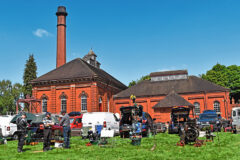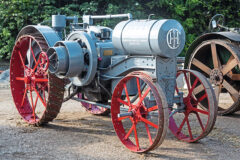1941 Ford 11Y truck
Posted by Chris Graham on 11th August 2023
We spotlight a 1941 Ford 11Y truck that still runs as well today as it did when it left the factory during World War 2.
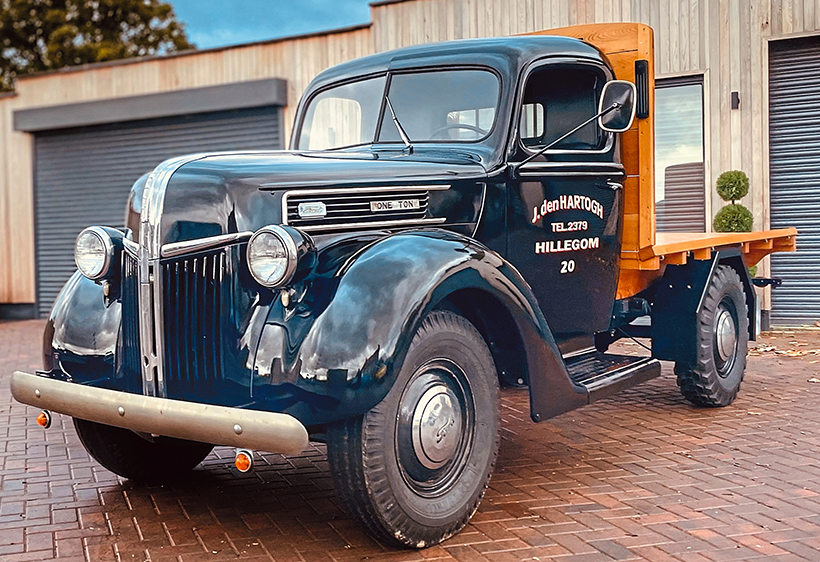
The very attractive Ford 11Y closed cab truck.
You can’t walk past this truck without stopping to admire its shiny black paintwork and its minimal, glistening, bright trim – the ideal combination for a working vehicle. Its slightly ‘macho’ stance is in keeping with its strength, power and size. Very few trucks survive long enough to become old; usually they are worked to death and then discarded, but this one is 81 years young, and remains just as spritely as it was when it emerged from the factory.
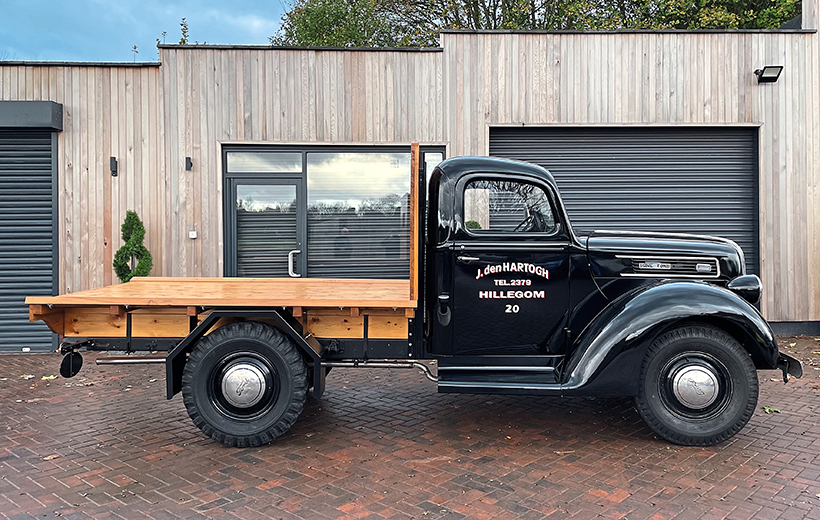
The truck’s bonnet side badges denote ‘Ford’ and ‘one ton’.
It has a classic, pre-war style, separate front wings with separate headlamps perched on top, a narrow, tall bonnet and a two-piece, flat glass windscreen with single wiper blade. The large petrol filler pipe is (perhaps) inconveniently positioned at the cab’s rear corner – on the passenger’s side. Access to the cab is aided by a generously sized step on both sides, with a very comfy-looking bench seat; so, the carrying of a driver’s mate was catered for.
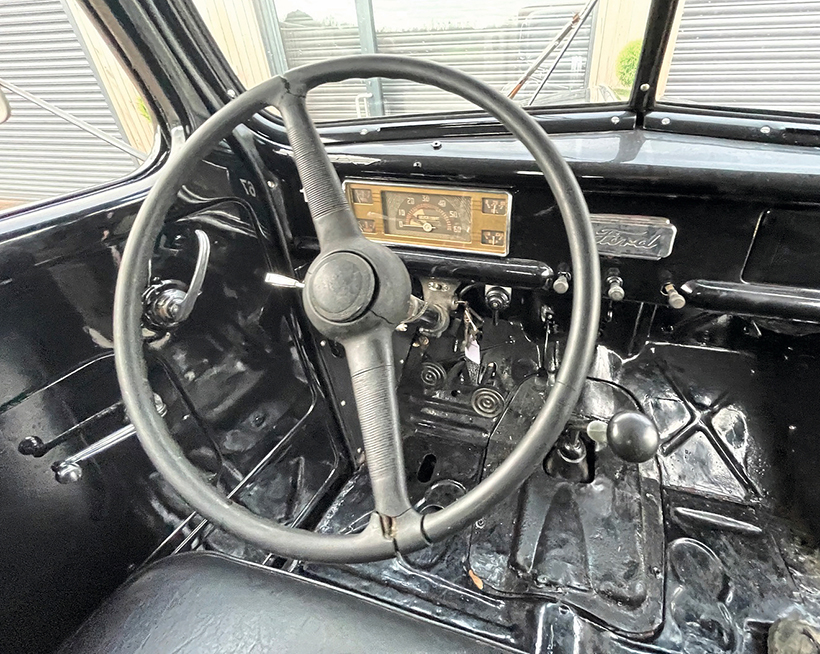
A driver’s view of the dash and large steering wheel.
Interior trim is typical of the time, with lots of bare, painted metal showing. However, the instrumentation is very comprehensive; monitoring oil pressure, fuel, electrical current, and engine temperature; alongside the speedo and mileometer. Typical of the day, only one external mirror was provided to assist the driver when pulling out, another to help seeing when his vehicle was clear of others being overtaken was thought unnecessary – the truck would easily pass anything else on the roads at that time. For safety, modern flashing direction indicators have been discreetly added (the boxed semaphores have been retained).
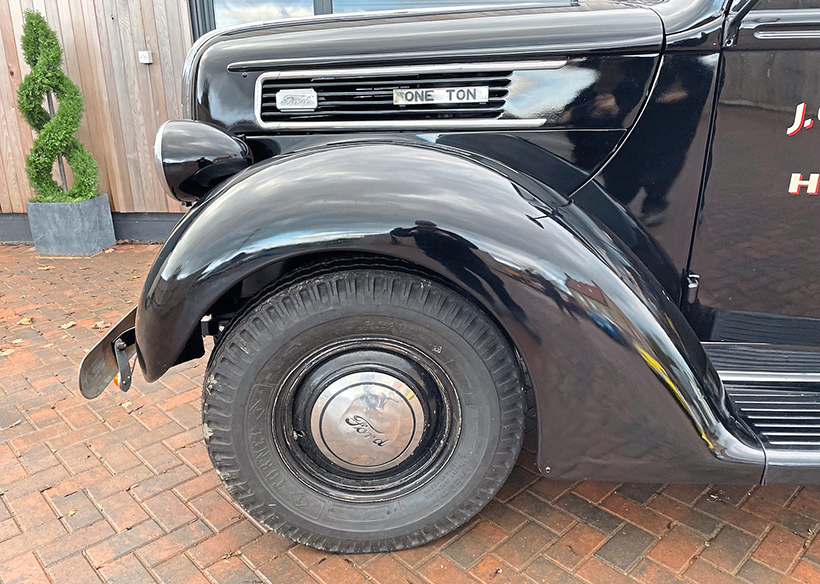
‘Ford’ script hubcaps.
The vehicle’s full title is: Ford 11Y closed cab, one-ton truck. The ’11’ signifies the fitting of the 3,600cc V8, 91hp sv petrol engine, while the letter ‘Y’ relates to the closed cab and 122in wheelbase chassis. It was built by Ford of Canada in 1941, before the company concentrated on military vehicles for the war effort, then exported to the Netherlands (despite the Nazi invasion of 1940).
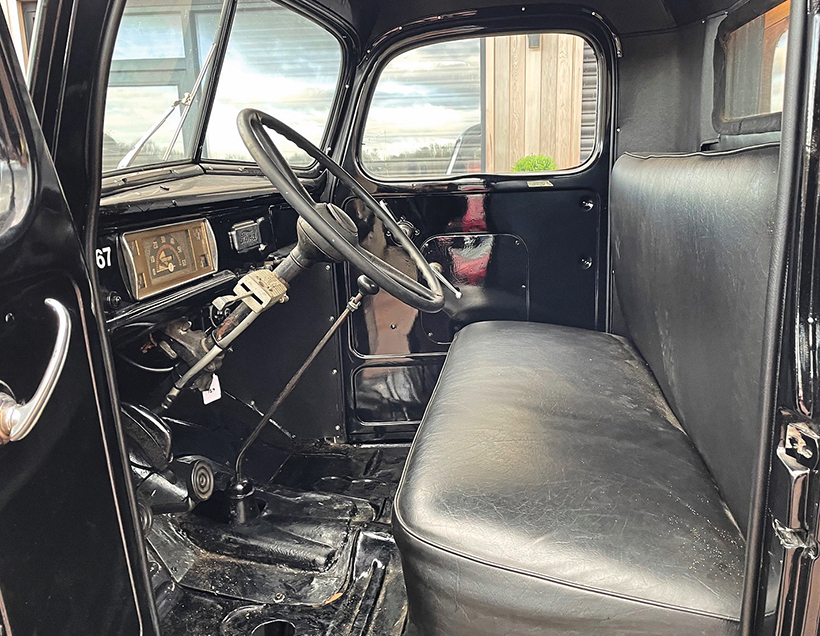
There’s room for three inside.
The vertical ‘Ford’ nose badge is part of the chromed cross trim, and it forms a pull-out handle to release the modern, alligator bonnet, providing good access to the massive power unit beneath. To allow the unobstructed flow of cooling air to exit the engine bay; the inner wings were designed with large cutaways. Along the bonnet sides there are additional vent grilles that carry ‘Ford’ and ‘One Ton’ badges. Also, of note on a commercial truck; are the large, chromed hubcaps imprinted with the ‘Ford’ script badging. Both cab doors carry the ‘Hartogh’ name, address and phone number.

The chrome cross nose trim.
The truck’s Dutch registration was H 71199, with ‘H’ representing the local province authority of South Holland. Attached to the rear loadbed is an ‘NL’ international plate that’s compulsory for travelling to other countries. The Ford has been successfully re-registered in the UK.
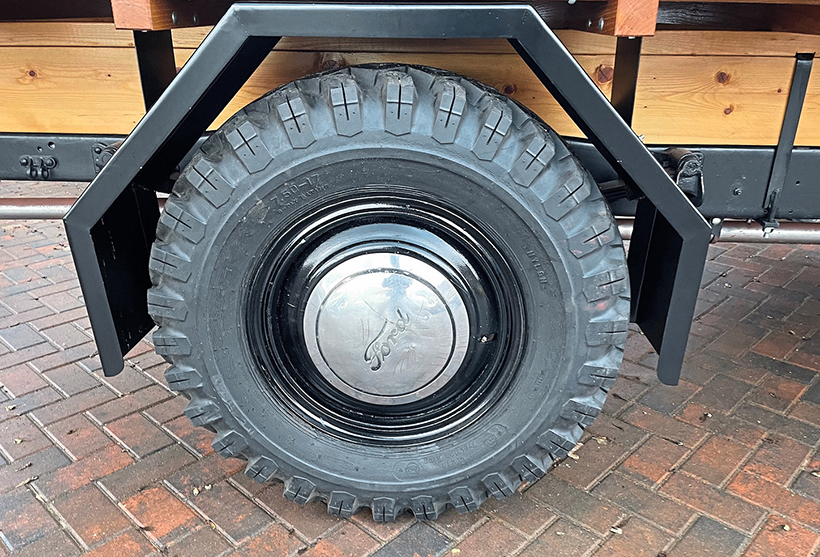
The rear mudguards have a unique look.
Family business
The long-established family haulage company of Den Hartogh started up in the days when goods were moved by canal barge and horse-drawn carts. Later, when the business progressed to motorised transport, it chose Ford as its preferred supplier and built up a sizable fleet.

There’s no mistaking the owner’s name.
Born in 1926, the young Piet den Hartogh grew up surrounded by Ford vehicles. Unsurprisingly, he chose to buy a Ford saloon when, in 1956, he was old enough to start driving – which began what would become a life-long fondness for the marque. When he inherited the, by now vast, and wealthy business, he set himself the goal of fulfilling a dream to acquire at least one example of each Ford model made from 1903 and the end of WWII, in 1945. While most would think that impossible, Piet was determined and began searching the world for Fords to add to his growing collection.
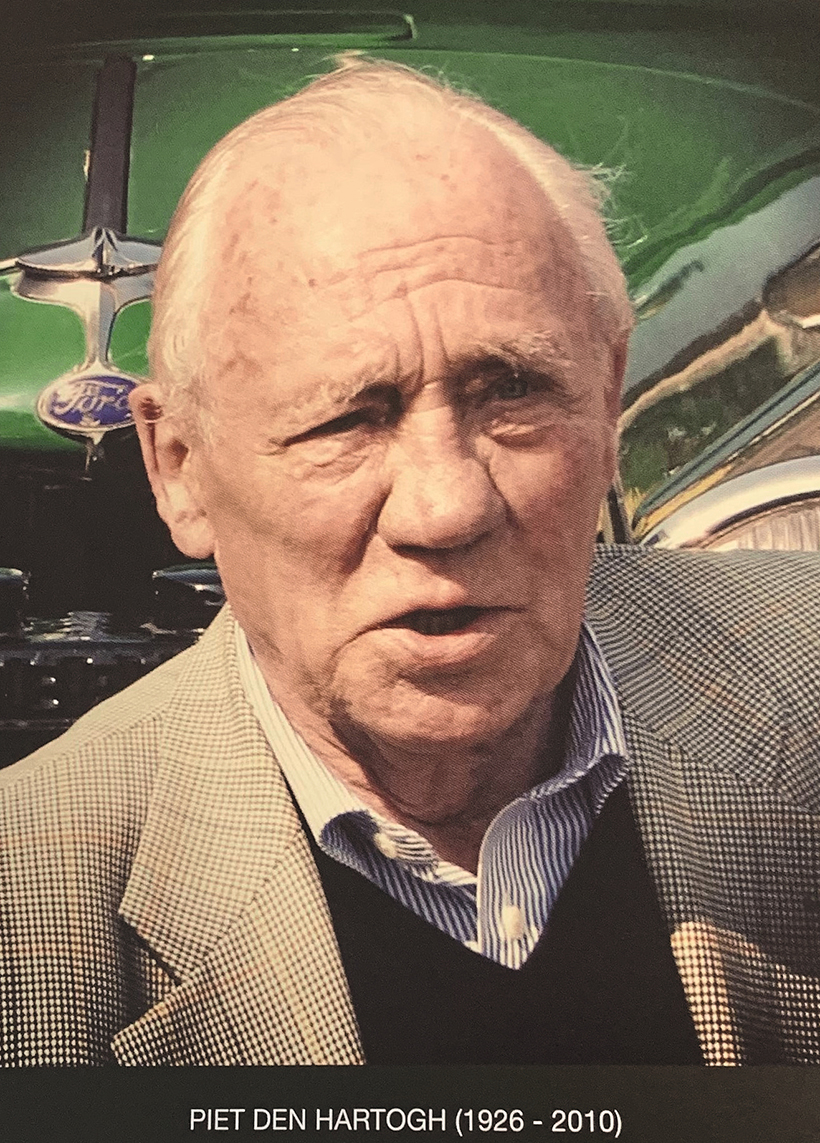
Piet den Hartogh.
He managed to build up the largest collection in the world and, at his wife’s suggestion in 1996, he opened it up to the public as a Ford museum in his home town of Hillegom in the Netherlands. Unfortunately, Piet died in 2010, but the family kept the museum going until 2016. At that point it was decided to close and sell off all the vehicles by auction. Rather than dispose of the whole as a single lot, they wanted them to be offered to the public as single lots – without reserve – to give everyone a chance of buying one. On June 23rd, 2018, the marathon auction run by Bonhams began, and it raised nearly $7 million. It was there that Andrew successfully bought lot 127, this Canadian-built Ford truck.
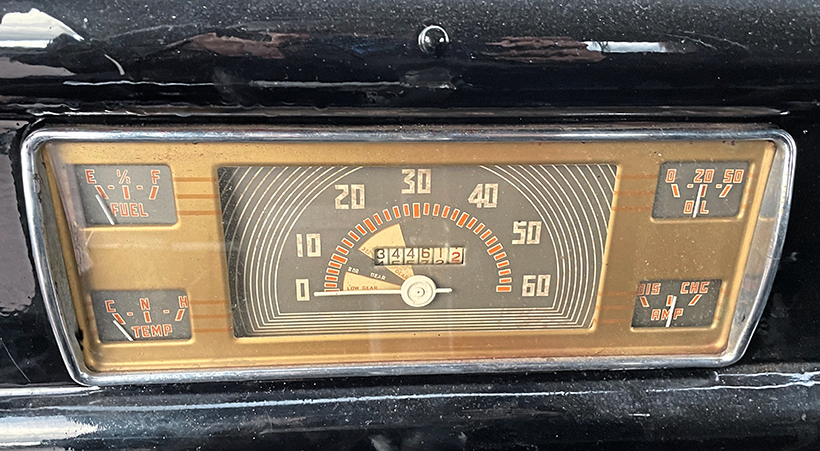
Comprehensive instrument panel.
Andrew says that the Early Ford V8 Club was tremendously helpful; particularly with dating the truck. It also provided valuable advice on the restoration preparation work needed. Once shipped back to County Durham, the truck was recommissioned by replacing the entire braking system, then fitting a new radiator, clutch and tyres. Currently, the display records 34,461km, and the truck is for sale at £26,500. My sincere thanks to the staff at Andrew Hardy Classics; particularly Ellie who was very helpful researching the truck’s recent history.
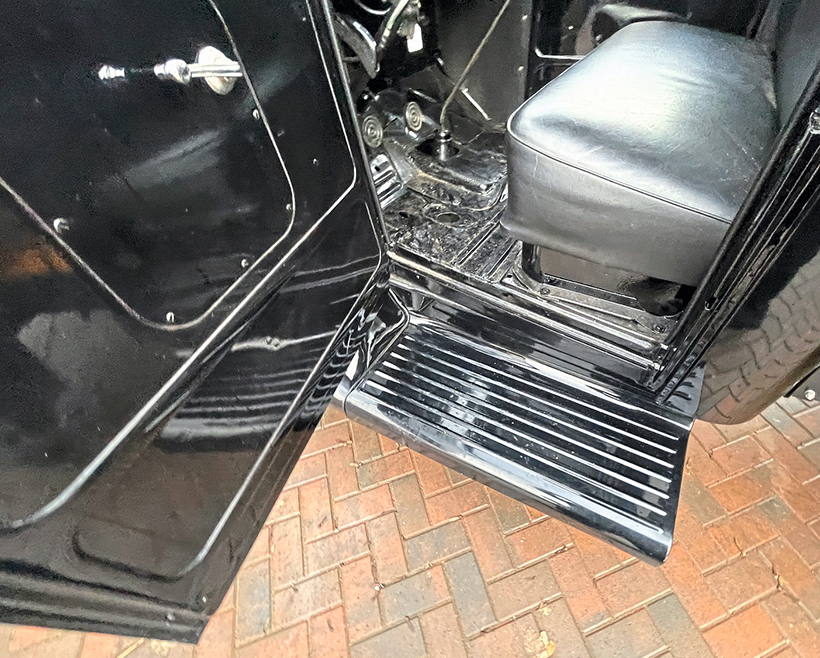
Large cab step and comfy bench seat.
Ford Motor Company of Canada started producing Ford vehicles from 1904 (just one year later than Ford of America), to supply Canada and the British Empire (except the UK), and supplied many other markets, including the Netherlands. It wasn’t owned by Ford of America (Henry Ford did have a minority interest) and most investors were private individuals, yet the company had been given all production rights to use all Ford patent designs and assembly procedures. The factory was in Ontario, in a district later to become Windsor, and it mushroomed during the 1930s. Throughout the war it produced more vehicles than Germany, Italy and Japan combined, and produced many of the soft-skinned military vehicles used by the Allies during the conflict.
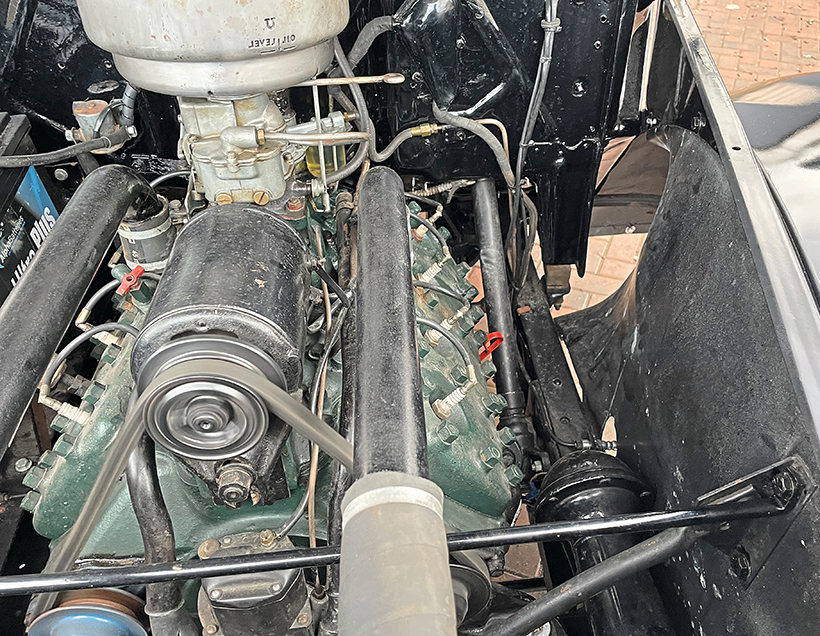
The Ford’s 3.6-litre V8 flathead engine.
This feature comes from the latest issue of Heritage Commercials, and you can get a money-saving subscription to this magazine simply by clicking HERE



